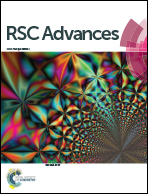The study on vascularisation and osteogenesis of BMP/VEGF co-modified tissue engineering bone in vivo
Abstract
To evaluate the osteogenic capacity of tissue engineering bone in vivo and compare the vascularization and osteogenesis between co- and single-modified tissue engineered bone. Method: 16 nude mice were involved in this study. Cell-scaffold complexes, constructed in vitro, modified with BMP and VEGF, alone or together, were implanted into the dorsum of nude mice by seeding on β-tricalcium phosphate (β-TCP). It included a control group, VEGF group, BMP group and BMP + VEGF group. Haematoxylin & Eosin (HE) staining, histological analysis and immunostaining were used at the 4th and 8th week post-implantation to evaluate the effects of bone formation. Results: HE staining showed that osteogenesis, osteoid and trabecular bones tissue were observed in the BMP + VEGF group and the BMP group at the 4th and 8th week, while neither bone regeneration nor bone tissue was found in the VEGF group and control group. Histological analysis indicated that the BMP + VEGF group dramatically enhanced the efficiency of osteogenesis compared to the BMP group, and the mean bone tissue area of the BMP + VEGF group was significantly broader than the BMP group (P < 0.01). Immunostaining showed that the BMP + VEGF group exhibited a higher degree of proportion of CD31(+) cells than the BMP group, and a larger number of new blood vessels and new bone were observed in the 8th week than the 4th. Conclusion: VEGF as well as BMP could affect each other and promote bone repair. It was advantageous to construct vascularization and osteogenesis in vivo by combining the application of BMP and VEGF, providing a potential way for treating bone defects.


 Please wait while we load your content...
Please wait while we load your content...